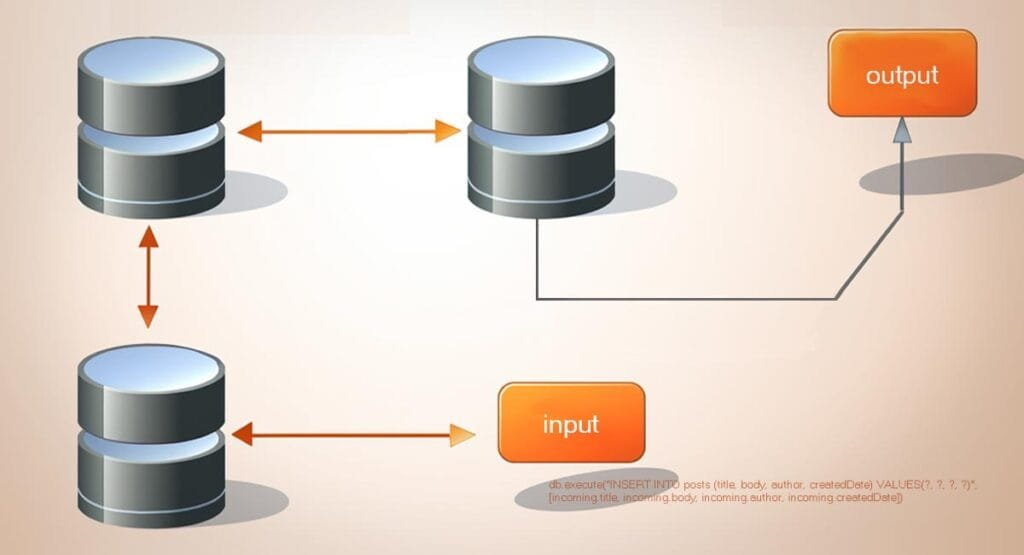Introduction
In the fast-paced digital age, businesses rely heavily on data to make informed decisions, drive growth, and stay competitive. As data volumes continue to soar, it becomes crucial to effectively manage and organize databases to ensure optimal performance, efficiency, and scalability. Database reorganization plays a vital role in maintaining the health and performance of these critical information repositories. In this comprehensive article, we will explore the intricacies of database reorganization, including its purpose, benefits, best practices, and the steps involved. By the end of this article, readers will have a clear understanding of why database reorganization is essential and how it can be effectively implemented.
Why Reorganize Databases?
Databases, especially in enterprise environments, tend to grow exponentially over time. As the amount of data stored increases, it can lead to various issues that hamper performance and productivity. Here are some compelling reasons why organizations choose to reorganize their databases:
- Optimizing Performance: Over time, databases can become fragmented, resulting in slower response times for queries and transactions. By reorganizing the database, data can be rearranged in a manner that improves read and write operations, leading to faster and more efficient access.
- Maximizing Storage Space: Database reorganization helps in reclaiming wasted storage space caused by data fragmentation. By reorganizing the database and eliminating unused or redundant space, organizations can effectively utilize their storage resources, potentially avoiding the need for costly hardware upgrades.
- Improving Maintainability: As databases grow, they become more complex and challenging to manage. Reorganization provides an opportunity to streamline the database structure, remove obsolete objects, and simplify overall maintenance. This enhances the database’s stability, reduces the likelihood of errors, and eases the burden on database administrators.
- Enhancing Data Integrity: A fragmented database can increase the risk of data corruption and inconsistent results. Reorganizing the database helps ensure data integrity by eliminating fragmentation and aligning data in a logical and consistent manner. This, in turn, improves the reliability of data-driven decision-making processes.
- Enabling Scalability: Growing businesses need databases that can scale effectively to handle increasing data volumes and user demands. Database reorganization allows organizations to optimize their database architecture, indexes, and storage systems to accommodate future growth, ensuring that the system can continue to deliver optimal performance even as data volumes expand.
Best Practices for Database Reorganization
While the benefits of database reorganization are evident, it is important to follow best practices to ensure a smooth and successful process. Here are some key considerations:
1. Planning and Analysis
Before initiating any database reorganization effort, it is crucial to perform a thorough analysis and planning phase. This includes:
- Assessing Performance: Evaluate the current state of the database by analyzing its performance metrics, identifying bottlenecks, and understanding specific areas that need improvement.
- Defining Objectives: Clearly define the goals of the reorganization process. Whether it is to improve performance, reduce storage costs, or enhance data integrity, having well-defined objectives will guide the entire reorganization effort.
- Understanding Dependencies: Identify any dependencies or interactions between database objects, such as tables, indexes, and views. This helps ensure that the reorganization process does not inadvertently disrupt critical functionalities.
2. Backup and Testing
Before undertaking any significant changes to a database, it is essential to create backups and perform comprehensive testing. This includes:
- Data Backup: Take a complete backup of the database to ensure data safety. This allows for easy restoration in case of any unforeseen issues or errors during the reorganization process.
- Testing Environment: Set up a dedicated testing environment that closely resembles the production environment. This allows for thorough testing of the reorganization process without impacting the live system.
- Performance Testing: Conduct performance tests on the reorganized database to measure and compare its performance against the pre-reorganization state. This provides insights into the effectiveness of the reorganization efforts and helps identify any areas that may require further optimization.
3. Incremental Reorganization
Instead of attempting a complete database overhaul in one go, it is often advisable to adopt an incremental approach. This involves:
- Identifying Critical Areas: Prioritize the reorganization of critical areas that have the most significant impact on performance and stability. This helps minimize disruption and ensures that the most crucial aspects are addressed first.
- Phased Implementation: Divide the reorganization process into smaller, manageable phases. Each phase should have clear objectives, and progress should be carefully monitored and validated before proceeding to the next phase.
- Monitoring and Validation: Continuously monitor the reorganized database’s performance and validate its effectiveness at each stage. This allows for timely adjustments and ensures that the desired improvements are being achieved.
4. Performance Monitoring and Maintenance
After completing the database reorganization, ongoing performance monitoring and maintenance are vital to ensure continued optimal operation. This includes:
- Monitoring Tools: Implement performance monitoring tools that provide real-time insights into the database’s health, resource utilization, and overall performance. Proactively addressing any emerging issues helps maintain a high-performing database environment.
- Regular Index Maintenance: Periodically review and optimize database indexes to ensure they remain effective and aligned with the data usage patterns. This helps sustain optimal query performance as the database evolves over time.
- Routine Database Maintenance: Regularly perform routine maintenance tasks such as updating statistics, compacting database files, and reorganizing indexes. These activities help prevent the reoccurrence of fragmentation and keep the database in peak condition.
Final Thoughts
Database reorganization is a critical undertaking for organizations looking to optimize the performance, efficiency, and scalability of their databases. By following best practices and adopting an incremental approach, businesses can unlock significant benefits, including improved performance, enhanced data integrity, and reduced storage costs. However, it is important to approach database reorganization with careful planning, thorough testing, and ongoing maintenance to ensure a successful outcome. With the exponential growth of data, organizations that embrace the regular reorganization of their databases will be better positioned to thrive in today’s data-driven landscape.
By understanding the importance of database reorganization and implementing best practices, businesses can harness the full potential of their data, drive innovation, and gain a competitive edge in their respective industries.
I write for and assist as the editor-in-chief for 601MEDIA Solutions. I’m a digital entrepreneur since 1992. Articles may include AI assisted research. Always Keep Learning! Notice: All content is published for educational and entertainment purposes only. NOT LIFE, HEALTH, SURVIVAL, FINANCIAL, BUSINESS, LEGAL OR ANY OTHER ADVICE. Learn more about Mark Mayo




